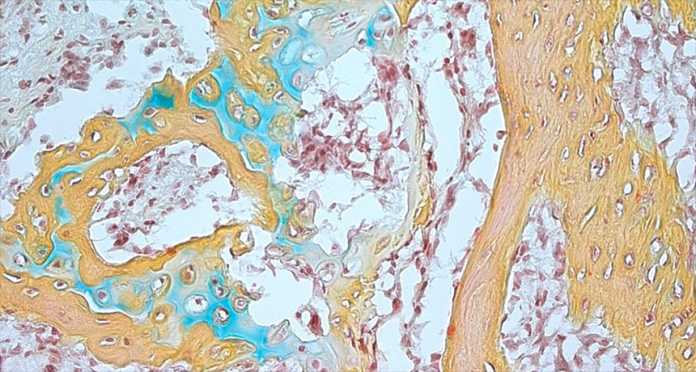Scientists at the Stanford University School of Medicine have discovered a human skeletal stem cell that can give rise to new bones and cartilages in humans. This discovery is the result of a gruelling decade-long research work by these scientists.
This cell can be isolated from the human bone or generated from special cells, and leads to progenitor cells that can make new bone, the stroma which is the bone’s spongy interior, as well as the cartilage that helps our knees and other joints function smoothly.
“Every day, children and adults need normal bone, cartilage and stromal tissue. There are 75 million Americans with arthritis, for example. Imagine if we could turn readily available fat cells from liposuction into stem cells that could be injected into their joints to make new cartilage, or if we could stimulate the formation of new bone to repair fractures in older people.” said Michael Longaker, MD, professor of plastic and reconstructive surgery at Stanford University.
The discovery of this cell has also allowed the researchers to create a family tree of stem cells integral to the upkeep and development of the human skeleton. This could also make way for groundbreaking treatments for regenerating bones and cartilages.
An article published on Stanford University’s website says that the skeletal stem discovered is self-renewing and capable of making bone, cartilage and stromal progenitors. It is found at the end of developing bone, as well as in increased numbers near the site of healing fractures. Not only can it be isolated from fracture sites, but it can also be generated by reprogramming human fat cells or induced pluripotent stem cells to assume a skeletal fate. It also provides a nurturing environment for the growth of human hematopoietic stem cells.
The researchers are aiming to find a way to use the human skeletal stem cell in the Stanford clinic. They also envision a future in which an arthroscopy procedure would be conducted with the injection of a skeletal stem cell specifically restricted to generate new cartilage.
“I would hope that, within the next decade or so, this cell source will be a game-changer in the field of arthroscopic and regenerative medicine. The United States has a rapidly ageing population that undergoes almost 2 million joint replacements each year. If we can use this stem cell for relatively non-invasive therapies, it could be a dream come true,” Longaker said.





































